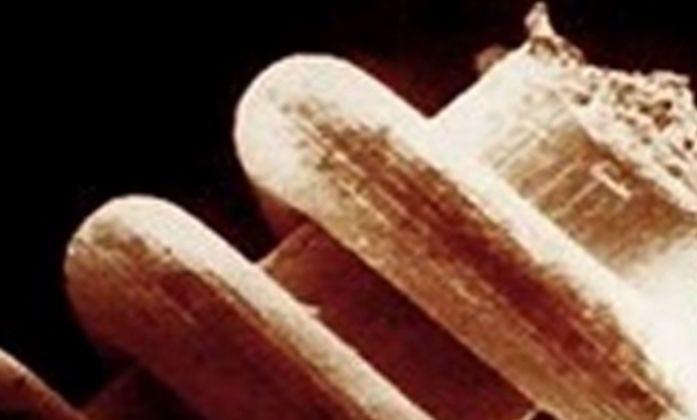An Oopart (Out Of Place ARTifact) is a term applied to dozens of prehistoric objects found in various places around the world that, given their level of technology, are completely at odds with their determined age based on physical, chemical, and/or geological evidence. Ooparts often are frustrating to conventional scientists and a delight to adventurous investigators and individuals interested in alternative scientific theories.
Just a few years ago, a strange stone was found in a suburb of Moscow. It has been examined by investigators from various disciplines, but since it exhibits such unusual characteristics, it seems to defy adequate classification. It might even contradict our current understanding of the distant past.
While investigations found the specimen to date several millennia before the emergence of man, it appears to hold two screw-like objects. Curiously, several researchers agree that these objects don’t appear to be naturally occurring features but instead display characteristics of manufactured materials.
On Aug. 13, 2003, the Russian newspaper Life published an article about the specimen.
The report said that the rock was determined to be several million years old, but it contained what some researchers insist can only be the product of an advanced technology.
The report describes the objects, resembling a nut and a bolt, found embedded in the stone. As if this remarkable specimen weren’t strange enough, further evidence finds that the rock might not be of Earthly origin at all, but a product of outer space.
More Prehistoric Stone Puzzles
Not long ago, another rock with similar features was found in Russia. Much like the stone described above, this discovery found in the country’s Galus Province also contained an unexpected surprise. When the specimen underwent X-ray analysis, it revealed the shocking image of eight screws held within it.
Another discovery of this type was found a few years back in China’s Mazong Mountain area. While on a research expedition, stone collector Zhilin Wang uncovered a pear-shaped black stone that also contained what looks remarkably like a metal screw.
Geologists and collectors from all over the world instantly became intrigued with Wang’s find. News of the discovery brought together more than 10 geologists and global physicists from various research institutions throughout China to examine the mysterious specimen.
This extraordinary black rock reveals a screw-threaded metal bar that looks undoubtedly manmade. Yet this metal rod seems to have been naturally encased in the ancient rock, suggesting it is millions of years old. All scientists who have examined the stone agree that this specimen is one of the most valuable archeological finds recently uncovered in China.
As all these objects were found embedded within stone, it indicates that they should have already existed before the formation of the rock encasing them. Yet the surrounding rock dates back in some cases to the Paleozoic Era, when creatures such as dinosaurs and trilobites inhabited this planet.
While these fantastic objects are certainly unusual, they are by no means rare. Found throughout the world over the last century, numerous discoveries suggesting the remnants of an advanced culture from a distant age have been found frozen in stone.
Each find is jarring to the scientific community mainly for the “impossibility” of their existence. In most cases, these examples are given little consideration; they are often written off as technological anomalies or natural oddities because the current anthropological assumptions contradict the evidence obtained.
Do these rocks offer real evidence to challenge the currently accepted notion of when mankind first originated? Or are they simply unusually magnificent natural features preserved in prehistoric rock?
If we entertain another possibility, as some researchers have theorized, are these odd specimens even native to this planet at all? If so, does it suggest that there were technologically advanced beings inhabiting the far reaches of space millions of years ago? Are these beings still out there, and how did material from their planet reach our world?
As more specimens of this type continue to be found and given careful and fair examination, perhaps a new picture of our ancient history will emerge—a history that might seem unfathomable today, given our current limited understanding.



